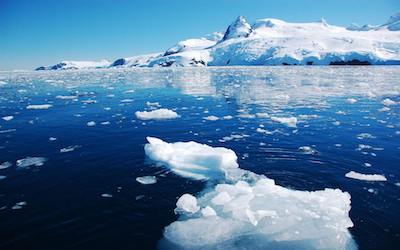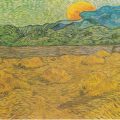PTE考生目前最大的问题之一就是练习题缺乏。除了有限的基本官方书(PLUS,Testbuilder, OG)之外就没有题了。很多英语基础不是很扎实的同学很难找到练习材料。悉尼文波雅思PTE培训学校专门为澳洲,尤其是悉尼、墨尔本的PTE考生准备了适合PTE听力阅读练习的科学60秒。各位PTE同学可以练习PTE听力中的summarise spoken text和PTE口语中的retell lecture,PTE听力口语-科学60秒-Frosty Moss练习记笔记技巧和复述。废话少说,下面开始:
听力内容:
60秒科学节目(SSS)是科学美国人网站的一套广播栏目,英文名称:Scientific American – 60 Second Science,节目内容以科学报道为主,节目仅一分钟的时间,主要对当今的科学技术新发展作以简明、通俗的介绍,对于科学的发展如何影响人们的生活环境、健康状况及科学技术,提供了大量简明易懂的阐释。
This is Scientific American — 60-Second Science. I’m Julia Rosen.
Got a minute?
Last Christmas, Santa Claus must have been loading his sleigh in a t-shirt and shorts. Temperatures at the North Pole crept up toward the freezing point when they should have been minus twenty Fahrenheit.
The heat wave was the latest in a series that have swept over the Arctic in recent winters. Climate change has caused steady warming in the region. But it has also helped supercharge these extreme events, which scientists say are tied to storms that spiral north out of the Atlantic.
“These winds actually pick up a lot of heat and moisture.”
Vladimir Alexeev, a climate scientist at the University of Alaska Fairbanks.
“And the atmosphere carries all this extra moisture and heat to the central Arctic, which results in [a] warmer and moister atmosphere.”
Which then warms the surface.
Alexeev says the heat ferried north by these storms helps slow the growth of sea ice in winter—causing it to be about 15 centimeters thinner by the end of the season. And thinner ice may have a harder time surviving the summer.
But while the impact of these storms has grown in recent decades, the storms themselves are not happening more often, Alexeev says.
“An important piece of information is that the frequency of those storms is not changing. What’s changing is the area of open water in those regions.”
As the Atlantic Ocean has warmed up, the amount of sea ice around Scandinavia and Siberia in winter has decreased. So now, instead of passing over an ice-capped ocean, storms blow over larger areas of open water on their way north. And that gives them a chance to pick up more heat and moisture from the sea that they carry into the Arctic, causing stronger heat waves.
Alexeev presented his results in December at the Fall Meeting of the American Geophysical Union in San Francisco.
Another study by Kent Moore, an atmospheric physicist at the University of Toronto, came out around the same time as the meeting and also linked the heat waves to storms passing over more and more open water. That research is in the journal Scientific Reports.
Alexeev says the situation could be an example of what scientists call a positive feedback: warming causes the loss of sea ice, which promotes more warming and even more ice loss. In other words, it’s a snowball effect—or in this case, an anti-snowball effect.
Thanks for the minute for Scientific American — 60-Second Science Science. I’m Julia Rosen.
墨尔本悉尼文波PTE原创首发
更多精彩请持续关注微信wenbo_tv3。





